American Indian, Native American, and Indigenous Persons Resources
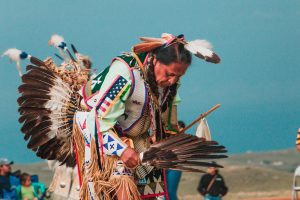 The history of Nebraska is made complete only when we acknowledge the tribal lands on which many of our communities are built, and the countless contributions to our society and state by the numerous Native tribes and Indigenous populations. The resources listed on the page seek to not only provide educators with access to accurate, timely, and diverse instructional materials to use in the classroom, but also honor the lives and culture of North America’s first inhabitants. Additionally, the information listed on this page will help schools and districts with meeting the requirements as outlined in state statute 79-724. The resources listed are by no means an exhaustive list. Any recommendations for additional resources are welcomed. Please refer to the Standards Instructional Tool, as well, for specific standards related resources.
The history of Nebraska is made complete only when we acknowledge the tribal lands on which many of our communities are built, and the countless contributions to our society and state by the numerous Native tribes and Indigenous populations. The resources listed on the page seek to not only provide educators with access to accurate, timely, and diverse instructional materials to use in the classroom, but also honor the lives and culture of North America’s first inhabitants. Additionally, the information listed on this page will help schools and districts with meeting the requirements as outlined in state statute 79-724. The resources listed are by no means an exhaustive list. Any recommendations for additional resources are welcomed. Please refer to the Standards Instructional Tool, as well, for specific standards related resources.
Disclaimer: The instructional materials and resources listed below are not endorsed by the Nebraska Department of Education. The scope of responsibility to use and implement any instructional materials and resources fall within the jurisdiction of each Nebraska school district. To that end, please ensure that all teaching tools, materials, and resources have met your districts qualifications for use in the classroom or you have the approval or your school and/or district before sharing any materials with your students.
**Denotes Nebraska specific resources.
American Indian Higher Education Consortium
From website: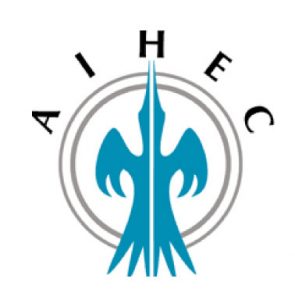
AIHEC provides leadership and influences public policy on American Indian and Alaska Native higher education issues through advocacy, research, and programmatic initiatives; promotes and strengthens Indigenous languages, cultures, communities, lands, and tribal nations; and through its unique position, serves member institutions and emerging TCUs.
American Indian Higher Education Consortium
American Indians in Children’s Literature
From website:
Debbie Reese founded AICL in May, 2006. By then, she had become an avid reader of a new form of expression–weblogs (blog for short)–and was keenly aware of their potential for impacting change.
Through AICL, she shares information that she think will help readers learn about and understand the 500+ federally recognized Native Nations in the United States. Most people know about the federal government and the state governments, but very few know about tribal governments. Very few people know that American Indians in the United States have a status that makes them distinct from other minority or underrepresented populations. A common phrase used to describe minority or underrepresented populations is “people of color.” American Indians are not, to quote Elizabeth Cook Lynn, a member of the Crow Creek Sioux tribe and founding editor of Wicazo Sa (a leading journal in American Indian Studies), “people of color.”
American Indians in Children’s Literature
**Genoa Indian School Digital Reconciliation Project
From website: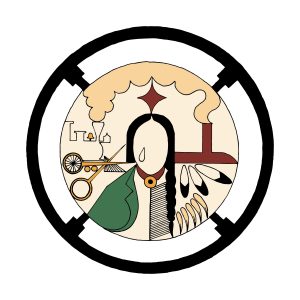
We honor the Pawnee people on whose land the Genoa school was built and the thousands of children from at least forty tribal nations who attended the school. We offer this site to their descendants and communities, who have survived and persevered despite the US government’s attempt to eradicate Indian cultures and sovereignties.
The Genoa Indian School Digital Reconciliation Project conveys our wishes for healing and justice to the Indigenous peoples of Canada in the wake of ongoing discoveries of mass graves of Indigenous children on the former sites of Canada’s Indian residential schools. We are grateful to U.S. Secretary of Interior Deb Haaland for launching the Federal Indian Boarding School Truth Initiative, the first major federal investigation into the U.S. government’s Indian boarding school policy.
Genoa Indian School Digital Reconciliation Project
Honoring Tribal Legacies
From website:
Honoring Tribal Legacies is a digital collection of teaching resources for use in classrooms everywhere. On this website you will find an array of curricula at different grade bands that honor a diverse and inclusive approach to social studies, STEM, language, and other subjects. These are original materials created by indigenous curriculum designers and some allies, too, made by and for this project. Our lessons can be downloaded and used just as they are, or they can be customized by teachers for their particular learners. Perhaps you, as a teacher, have more or less time to devote to the given topic, or you might need to scaffold a unit or lesson for a different age group. We welcome you to embrace these materials and use them as often as you like.
Indigenous Language Institute
From website:
ILI was founded as the Institute for the Preservation of the Original Languages of the Americas (IPOLA) by Joanna Hess in September 1992 in Santa Fe, New Mexico. In 1997, the organization became a national center to serve all tribes and individuals working to revitalize indigenous languages in the Americas. In 2000, IPOLA was changed to Indigenous Language Institute (ILI) to reflect new Board leadership, expanded services to all indigenous communities, and working relations with indigenous communities internationally.
National Congress of American Indians
From website:
Founded in 1944, the National Congress of American Indians (NCAI) is the oldest, largest, and most representative American Indian and Alaska Native organization serving the broad interests of tribal governments and communities.
NCAI, a non-profit organization, advocates for a bright future for generations to come by taking the lead to gain consensus on a constructive and promising vision for Indian Country. The organization’s policy issues and initiatives are driven by the consensus of our diverse membership, which consists of American Indian and Alaska Native tribal governments, tribal citizens, individuals, and Native and non-Native organizations.
National Congress of American Indians
National Indian Education Association
From website:
The National Indian Education Association (NIEA) was formed in 1969, in Minneapolis, Minnesota, by Native educators who were anxious to find solutions to improve the education system for Native children. The NIEA Convention was established to mark the beginning of a national forum for sharing and developing ideas, and influencing federal policy.
NIEA adheres to the organization’s founding principles: 1) to bring Native educators together to explore ways to improve schools and the schooling of Native children; 2) to promote the maintenance and continued development of Native languages and cultures; and 3) to develop and implement strategies for influencing local, state, and federal policy and policymakers.
National Indian Education Association
National Museum of the American Indian
From website:
**Native American Coalition (University of Nebraska – Lincoln)
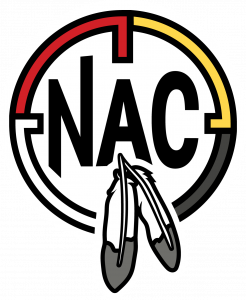 From website:
From website:
The University of Nebraska–Lincoln Native American Coalition (NAC) builds relationships and partnerships between the Nebraska Extension and Native American communities and organizations. The work of NAC is to help Nebraska Extension staff work more effectively with Native American communities, to build bridges between tribal and non-tribal communities, to facilitate community development and leadership in Native communities and to bring Native American traditional worldviews, languages, cultures and histories to the University of Nebraska and non-tribal communities.
Native American Coalition – University of Nebraska Lincoln
Native American and Settlers (Nebraska Studies)
From website:
Native American tribes, including the Omaha, Oto, Missouri, Pawnee, Arapaho and Cheyenne, all ceded (gave up) land in Nebraska to the U.S. government. In all, there were 18 separate treaties between 1825 and 1892 in Nebraska alone. These treaties were a part of a much larger pattern of land transfers that allowed an explosion of European settlement.
By 1850, the tribes had seen more people moving through along the Platte River. The Homestead Act, which gave free land to settlers, meant that large numbers of immigrants were now going to stay in the area. What were the relationships among the different tribes and the settlers? Did all the various tribes live together peacefully during this time? Were they free to move about? How did they become confined to reservations?
In this section, there are two major stories about Native Americans during the settlement period. First, there is the story of how native people met the challenges of living on this plains landscape. And second, there is the story of conflict as more and more people tried to live on the same land.
Native Americans and Settlers (Nebraska Studies)
**Native Indigenous Centered Education (Omaha Public Schools)
From website:
Purpose:
To meet the unique educational and culturally related academic needs of Indian students, so that such students can meet the challenging State standards.
To ensure that Indian students gain knowledge and understanding of Native communities, languages, tribal histories, and cultures.
To ensure that teachers, principals, other school leaders, and other staff who serve Indian students have the ability to provide culturally appropriate and effective instruction and supports to such students.
N.I.C.E. Mission
To educate and empower Indigenous students, families, and communities to seek and achieve holistic well-being through academic excellence, cultural strengths and self-advocacy.
N.I.C.E. Vision
A unified and culturally enriched community which sustains and strengthens resilience in our respective Tribal Nations.
Native Indigenous Centered Education
Native Knowledge 360
From website: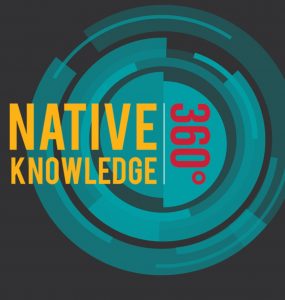
Native Knowledge 360° (NK360°) provides educators and students with new perspectives on Native American history and cultures. Most Americans have only been exposed to part of the story, as told from a single perspective through the lenses of popular media and textbooks. NK360° provides educational materials, virtual student programs, and teacher training that incorporate Native narratives, more comprehensive histories, and accurate information to enlighten and inform teaching and learning about Native America. NK360° challenges common assumptions about Native peoples and offers a view that includes not only the past but also the vibrancy of Native peoples and cultures today.
Native Land
From website:
Native Land Digital strives to create and foster conversations about the history of colonialism, Indigenous ways of knowing, and settler-Indigenous relations, through educational resources such as our map and Territory Acknowledgement Guide. We strive to go beyond old ways of talking about Indigenous people and to develop a platform where Indigenous communities can represent themselves and their histories on their own terms. In doing so, Native Land Digital creates spaces where non-Indigenous people can be invited and challenged to learn more about the lands they inhabit, the history of those lands, and how to actively be part of a better future going forward together.
**Nebraska Commission on Indian Affairs
From website: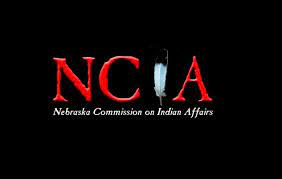
The Commission on Indian Affairs was established in 1971 and consists of 14 Indian commissioners appointed by the Governor. Additionally, the commission has four “ex-officio” member representing the Pawnee tribe, Oglala Sioux, Ioway, Sac and Fox. The commission’s statutory mission is “to do all things which it may determine to enhance the cause of Indian rights and to develop solutions to problems common to all Nebraska Indians.” It is the state liaison between the four headquarter tribes of the Omaha, Ponca, Santee Sioux and Winnebago Tribes of Nebraska. It helps ensure the sovereignty of both tribal and state governments are recognized and acted upon in a true government-to-government relationship. The commission serves off-reservation Indian communities by helping assure they are afforded the right to equitable opportunities in the areas of housing, employment, education, health care, economic development and human/civil rights within Nebraska. All goals of the commission are accomplished through advocacy, education and promotion of legislation.
Nebraska Commission on Indian Affairs
Office of Indian Education
From website:
The U.S. Office of Indian Education (OIE) administers the Indian Education Program of ESEA, as amended by ESSA (Title VI, Part A), which establishes policies and provides financial and technical assistance for supporting LEAs, Indian Tribes and organizations, post- secondary institutions and other entities in meeting the special educational and cultural related academic needs of American Indians and Alaska Natives, 20 U.S.C. 3423c and 7401 et. seq. The OIE is headed by a Director who reports to the Assistant Secretary and who advises the Assistant Secretary on matters related to the programs administered by OIE.
The OIE has three primary responsibilities:
- To meet the unique educational and culturally related academic needs of Indian students, so that such students can meet the challenging State academic standards;
- To ensure that Indian students gain knowledge and understanding of Native communities, languages, Tribal histories, traditions, and cultures; and
- To ensure that teachers, principals, other school leaders, and other staff who serve Indian students have the ability to provide culturally appropriate and effective instruction and supports to such students.
**Omaha Tribe of Nebraska
The Umonhon (Omaha) are a federally recognized American Indian Tribe whose Reservation is in northeastern Nebraska and western Iowa, United States.
Partnership with Native Americans
From website:
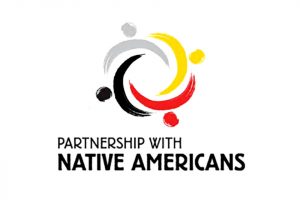
Partnership With Native Americans is a 501 (c)(3) nonprofit organization committed to championing hope for a brighter future for Native Americans living on remote, isolated and impoverished reservations. Collaborating for nearly 30 years with our reservation partners, we provide consistent aid and services for Native Americans with the highest need in the U.S.
Much of our work centers around material aid, educational support and community-based services. PWNA also connects outside resources directly to reservations through its distribution network and reservation partnerships. We care about quality of life for Native Americans and respect their self-determined goals for their tribes.
Partnership with Native Americans
**Ponca Tribe of Nebraska
From website:
The Ponca Tribe of Nebraska is a federally recognized tribe headquartered in Niobrara, Nebraska. Although the Ponca Tribe of Nebraska does not have a reservation, the Ponca Restoration Act established our fifteen-county Service Delivery Area across Nebraska, Iowa and South Dakota. We offer a broad range of health, social, educational and cultural services through five office sites.
Project 562
From website: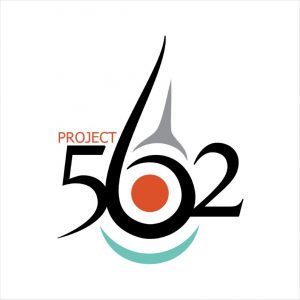
Created by Matika Wilbur, Project 562 is a multi-year national photography project dedicated to photographing over 562 federally recognized tribes in The United States resulting in an unprecedented repository of imagery and oral histories that accurately portrays contemporary Native Americans. This creative, consciousness-shifting work will be widely distributed through national curricula, artistic publications, exhibitions, and online portals.
**Santee Sioux Nation
From website:
Santee is located in the beautiful rolling hills of Knox County, Nebraska. Santee was founded in June of 1866 when our ancestors moved here due to conditions in Crow Creek.
Modern day Santee has grown as a community with a state of the art health clinic, a new casino, new fire hall, new swimming pool, youth centers, and a new building for The Nebraska Indian Community College Santee campus. Housing continues to be constructed as well as a new justice center. Santee continues to thrive and grow as a community.
United National Indian Tribal Youth (UNITY)
From website: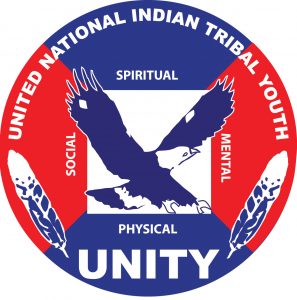
UNITY provides Native American and Alaska Native youth an experience, like no other, through our culturally relevant leadership programming designed to empower youth to realize their individual potential.
UNITY’s Mission is to foster the spiritual, mental, physical, and social development of American Indian and Alaska Native youth, and to help build a strong, unified, and self-reliant Native America through greater youth involvement.
United National Indian Tribal Youth
**Winnebago Tribe of Nebraska
From website:
The Winnebago Tribe of Nebraska, as a sovereign Nation, is committed pursuant to its Constitution, to maintain, improve and protect the Tribe; To preserve its resources and cultural heritage; To create opportunities for its members to thrive and become economically and socially self-sufficient as individuals, families and as a tribal government; and, thereby, promote the harmony of traditional values, beliefs which will ensure a positive course of action for future generations.
WoLakota Project
From website: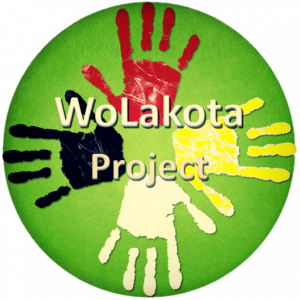
“Wolakota” means peace, balance and coming together. The WoLakota project supports students in high-need schools through guiding educators into better implementation of the Oceti Sakowin Essential Understandings (OSEU) via Culturally Responsive Practices. Implementation of the OSEU increases elements of Oceti Sakowin identity within the school environment and practice, supporting learning for native students and promoting deeper cultural understanding among non-native students and teachers. Lakota Elder Dottie LeBeau states, “When we approach teaching with one worldview…we create systems of failure in our schools.” WoLakota closes the circle into a system of understanding and success.



